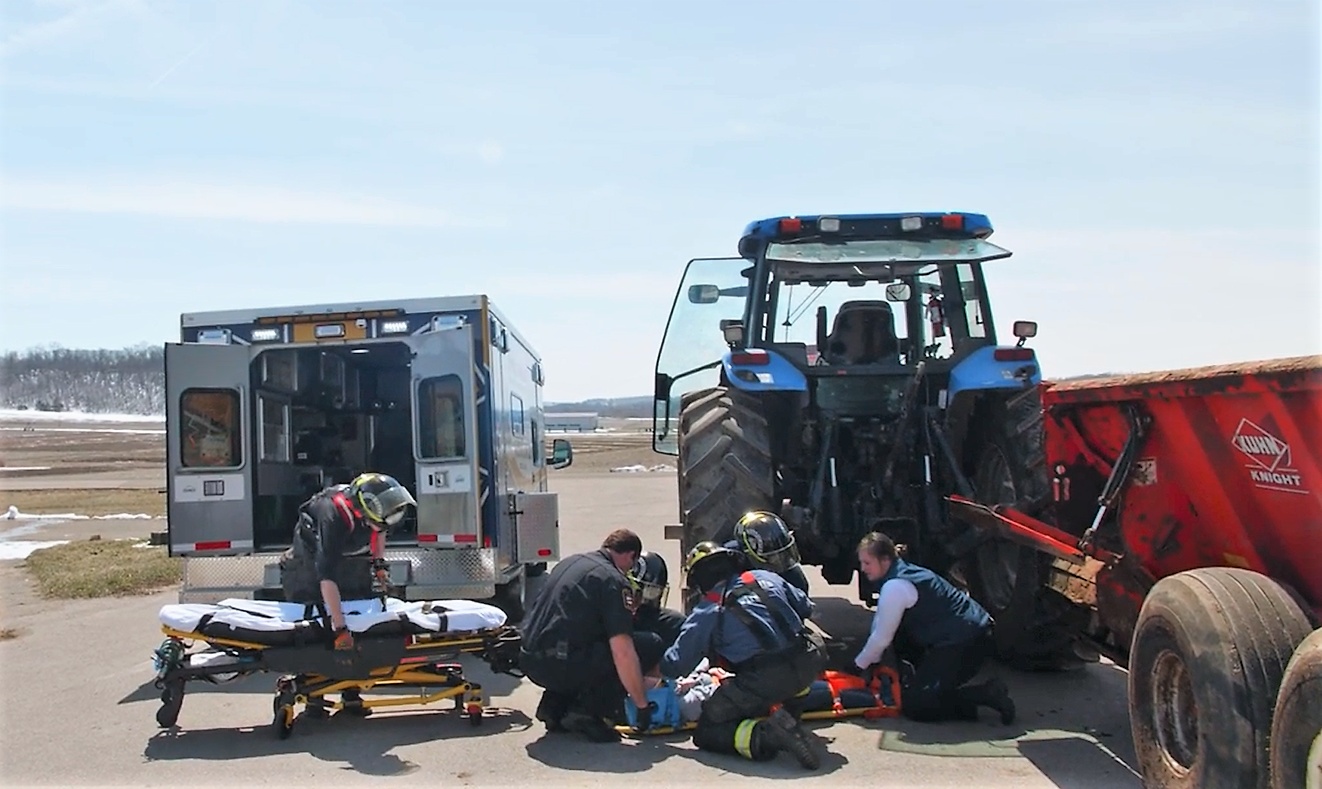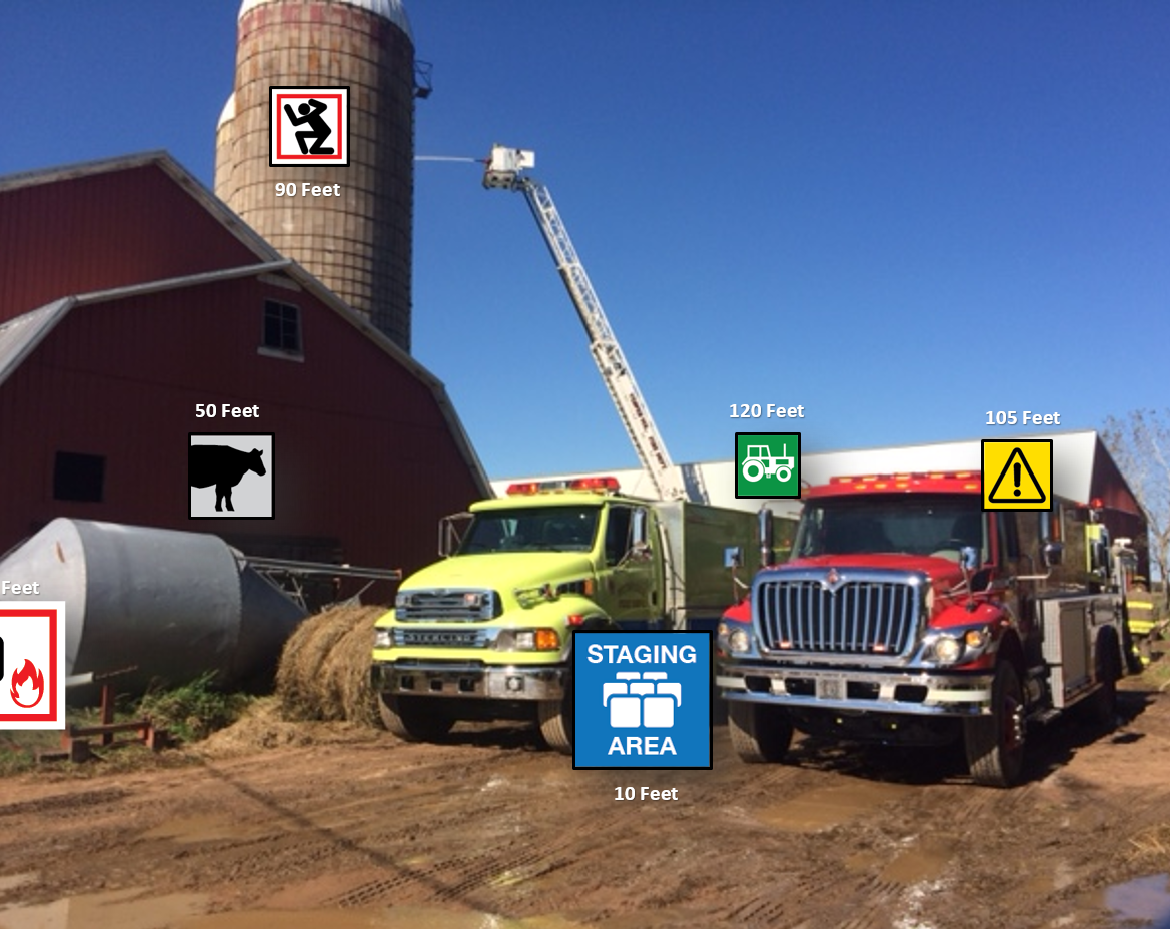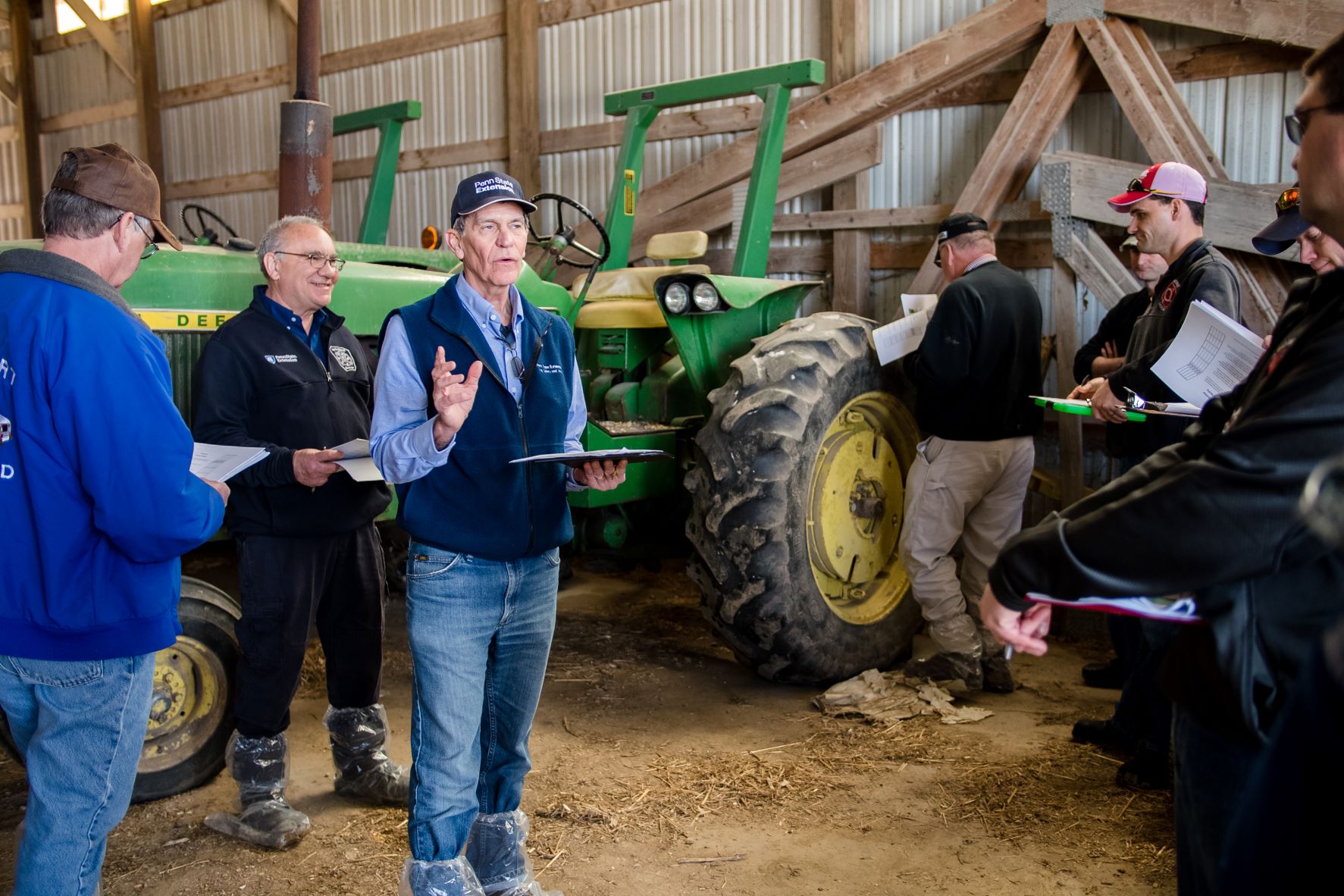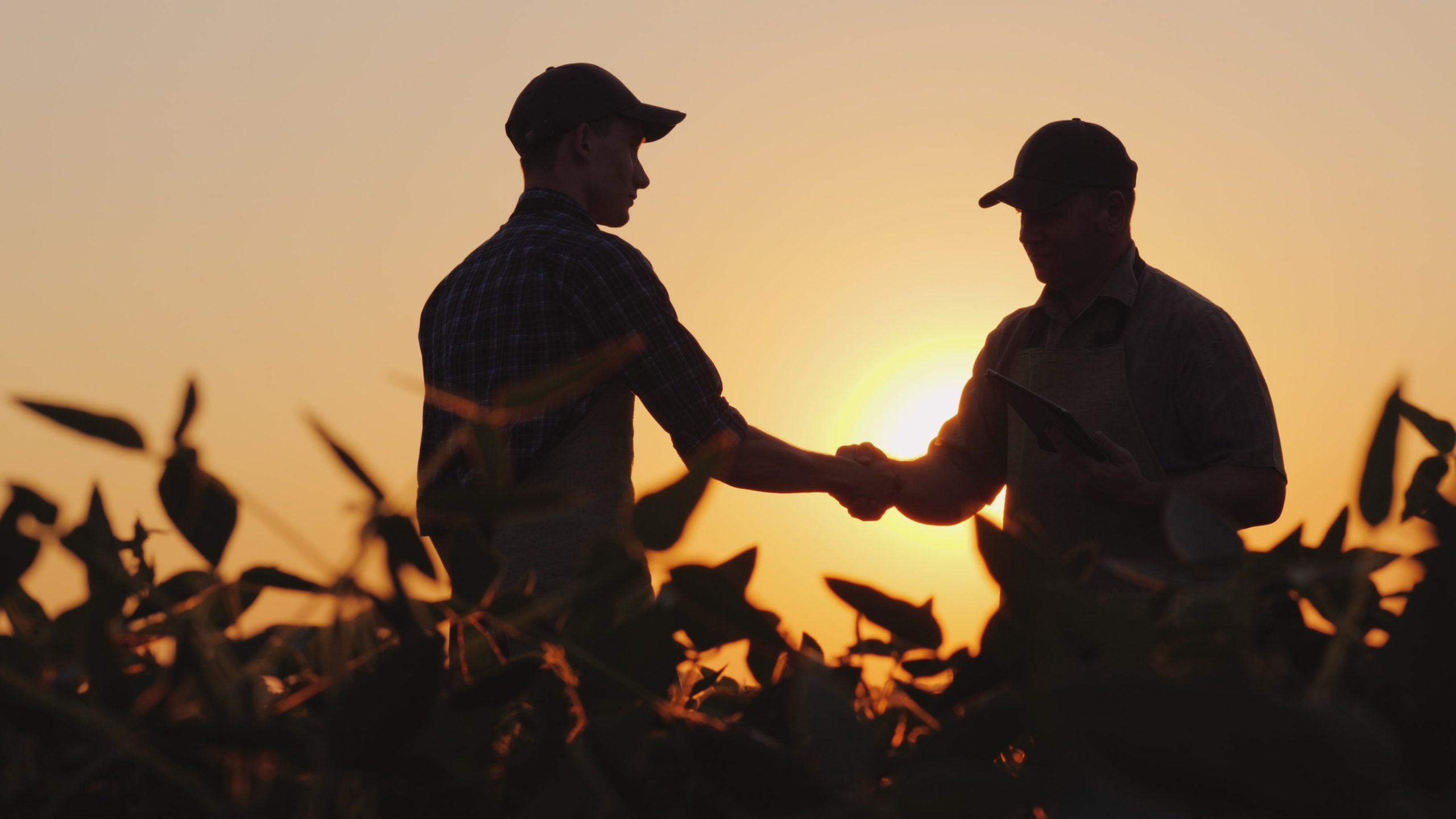
RF-DASH Training in Casselton, ND | July 19, 2025
Thank you for your interest in the RF-DASH program and our upcoming training near Casselton, North Dakota on July 19, 2025. The RF-DASH training is open to first responders, farmers, and other agricultural community stakeholders.
The training will include a classroom portion as well as a hands-on component on a local farm. Further information about the upcoming training can be found below.
Please register to attend the training. Breakfast and lunch will be provided and registration is free.
| When | July 19, 2025 8:00 AM – 4:00 PM Central Time |
| Class Location | 15560 28th St. SE Amenia, North Dakota 58004 |
| Registration | https://redcap.link/casselton |
If you have any questions, please contact:
Tim Zehnder
Lead Trainer, RF-DASH
tim@exenvironmental.com
715-781-0735
North Dakota RF-DASH Team
Cale Woodhouse
redneckhillbilly117@yahoo.com
Angie Johnson, NDSU Extension
angela.b.johnson@ndsu.edu
RF-DASH Core Team
rfdash@marshfieldresearch.org
715-389-4141
Agenda
RF-DASH Training Agenda
Saturday, July 19, 2025
| Time | Event |
|---|---|
| 8:00 AM | Check-in and breakfast |
| 8:30 AM | Welcome & Introductions |
| 9:00 AM | Module 0: RF-DASH Overview |
| 9:15 AM | Module 1: Introduction to Ag Emergencies |
| 10:00 AM | Module 2: Pre-Planning Farm Responses |
| 10:45 AM | Break |
| 11:00 AM | Module 3: Farm Hazard Analysis |
| 11:30 AM | Module 4: Farm First Aid |
| 12:15 AM | Module 5: Farm Community Outreach |
| 12:30 PM | Lunch / SaferFarm & Farm MAPPER demo / Virtual Farm Walk-Through |
| 1:00 PM | Additional Module: Speaking with the Media |
| 1:15 PM | RF-DASH Hands-On Training |
| 4:00 PM | Closing Remarks / Evaluations |
Location Info
15560 28th St. SE
Amenia, North Dakota 58004
Who Can Attend
RF-DASH is a community-based injury prevention program that aims to leverage the bonds between rural fire departments, farmers/ranchers, and agricultural community members to reduce rates of agricultural injury and property loss in rural communities.
As a community-based program, the RF-DASH Training is open to fire fighters, EMS personnel, law enforcement, safety professionals, Extension agents/staff, technical college instructors, rural insurance agents, farmers, and other rural community members interested in preventing agricultural injuries and incidents.
Modules
The RF-DASH program consists of five classroom-based modules followed by a hands-on component. The modules cover agricultural emergencies, tools for preplanning and hazard analysis, strategies for reaching the agricultural community and more. The hands-on component will provide participants with firsthand experience using the tools Farm MAPPER and SaferFarm to pre-plan/map farm and assess farm hazards, respectively. Learn more by perusing the RF-DASH resources.

Module 1:
Introduction to Ag
Emergencies
First responders are trained and well practiced for emergencies that are of high frequency, low risk such as carbon monoxide and roadway incidents. However, farms pose as a low frequency, high risk emergency to many first responders. This introductory module introduces them to and discusses the causes of the most common farm emergencies, including strategies to expedite and improve responses to them.

Module 2:
Preplanning and Mapping
Farms with Farm MAPPER
Responding to emergencies on agricultural sites can be as dangerous as working there. Farms have machinery, chemicals, flammable agents, multi-story structures, unique electrical systems, to name a few challenges that place unique hazards to rescue personnel. Responders need to have a planned response for the farms in their service area to reduce this risk. This module includes instructional use of Farm-MAPPER, a free, online, mobile-friendly tool, that gives fire departments the ability to pre-plan and map farms, expediting response times in the event of a emergency.

Module 3:
Farm Hazard Analysis with
Saferfarm.org
The goal of this module is to help with the identification of common hazards found on farms. Most individuals understand the need to identify farm hazards, however that is only one stage of the goal in managing hazards and risks. Farm hazards must also be evaluated and ranked in priority. These three stages tend to cyclical as opposed to being discrete, sequential steps. Saferfarm.org and the Farm Hazard Analysis Tool (FARM-HAT)provides everyone the ability to correct hazards and reduce the risk of injury on farms.

Module 4:
Farm First Aid
Most farmers and their families will not have any formal training in emergency response and first aid, and with the wide range of different hazards on farms, the probability of an incident is high. Knowing the correct response can improve a stressful situation and lead to better patient outcomes. This module aims to educate farm family members and employees how to manage a victim injured in a farm incident while emergency services are en route to the scene.

Module 5:
Approaching the Farm
Community
This module covers methods on how to reach out and approach the farming community to implement the RF-DASH program on their area’s operations.
Tools/Tech
The RF-DASH program utilizes two free and easy-to-use tools: Farm MAPPER and SaferFarm. Farm MAPPER is an online mapping application that first responders can use to create pre-plans of farms and other agricultural sites. SaferFarm is a tool for assessing specific agricultural hazards present on an operation and developing a mitigation plan with the operator. Click the links to learn more about these tools!
CEUs
Certificates validating 8 hours of CEUs upon completion, pre/post test, and evaluation of the program will be awarded.

How to Dress
RF-DASH Training participants should dress for walking around a farm, taking into account the possibility of inclement weather. Long pants are suggested. Closed-toed shoes are required. Turnout gear is not necessary for the RF-DASH Training.
Acknowledgements
The RF-DASH program acknowledges its multiple funding sources over the years: UMASH Pilot Award P005501204 (2014-2016) ● CDC-NIOSH U54 OH010170 (UMASH) (2016-2022) ● CDC-NIOSH U54 OH010170-11 (UMASH) (2022-2027) ● NIH-NCATS U54 TR002373-06 (E2I, UW-Madison) (2024-2025)